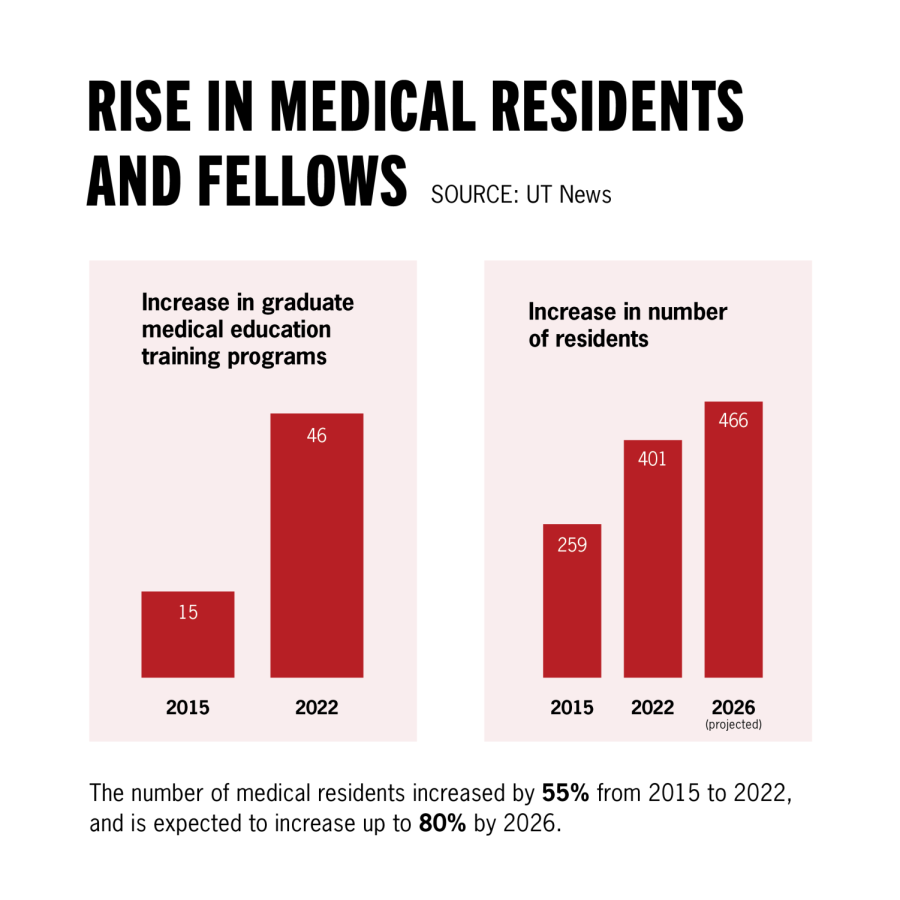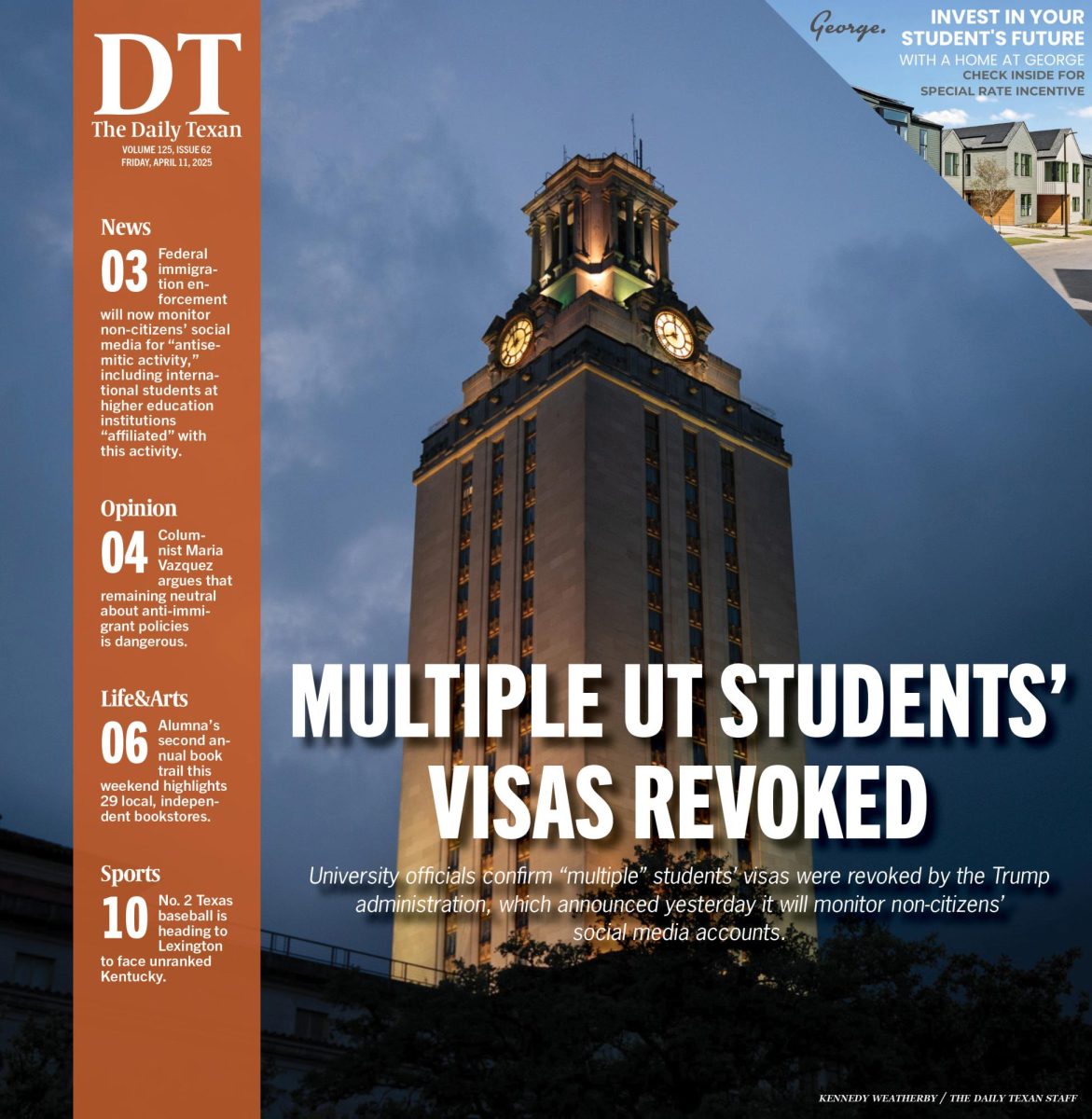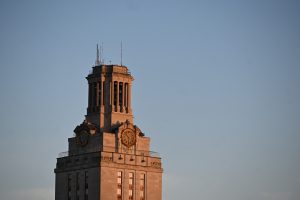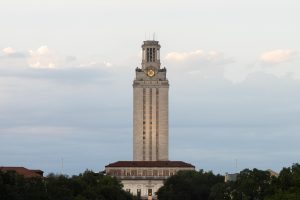Dell Medical School, Ascension Seton’s graduate medical education program doubles residents since 2015
October 13, 2022
The number of medical residents at Dell Medical School and Ascension Seton has nearly doubled since 2015, and is projected to increase from there, according to a recent press release.
Through the expansion of graduate medical education programs, the number of medical residents and fellows associated with Dell Medical School and Ascension Seton has increased to 401 — a 55% increase since 2015 — according to the press release. The number of residents and fellows is projected to increase to 466 by 2026.
Residents are “medical school graduates pursuing three to seven years of post-graduate training” in a particular specialty, according to the press release. Fellows pursue at least one year of training in a subspecialty following their residency.
Dell Medical School and Ascension Seton collaborated in 2015 to expand existing graduate medical education programs. Since then, the partnership created 31 new programs in various fields.
“We have a long-standing history of participating in medical education in Austin,” said Steve Conti, division director of academic affairs for Ascension Seton. “What Dell Medical School has brought to that is the standard of excellence that the University of Texas is known for.”
In the 2022 academic year, residents and fellows provided 730,000 hours of care to patients at over 80 locations including local Ascension Seton hospitals and CommUnity Care Health Centers, according to the press release.
“We cannot do any of this without our community partners,” said Jonathan MacClements, associate dean of graduate medical education at Dell Medical. “Our partners help us with our education opportunities because graduate medical education training involves a lot of clinical work. We rely heavily on their engagement to help train the next generation.”
Dell Medical School and Ascension Seton create graduate medical education programs based on the needs of the community. Conti said future fields likely to see expansion include primary care, women’s services and children’s services.
The programs follow the medical school’s signature Advancing Care Transformation curriculum which focuses on teaching residents to tackle systemic issues in health care. Additionally, some of the locations the residents work in are categorized as safety net hospitals, which are institutions that provide care to patients regardless of insurance status.
“We want our residents to learn how to be members of teams to provide top-notch health care to the community,” MacClements said. “We could not do what we do in our community without our training programs. (Residents) work in safety net hospitals that have been designed to take care of the underserved. Providing the highest quality care for the underserved is one of the visions and missions of graduate medical education.”
Simin Golestani, resident association president and fifth-year general surgery resident at Dell Medical School, said working with her co-residents and attending physicians served as a large support system throughout the years.
“Residency has made me grow in ways that I did not even think I could grow in,” said Golestani. “Now I feel like I have so much more confidence in my abilities to take care of people. It’s given me a lot of gratitude for this job, because it is a privilege to be able to take care of patients.”
The increase in residents and fellows comes amid trends of population growth and doctor shortages in Central Texas. According to another press release from Dell Medical School, the statewide physician shortage will see a 66% increase from 2018 to 2032.
“This is a fast-growing market,” Conti said. “While we’ve established the training programs we have today, and we anticipate that those are going to meet the needs in the future, it’s ever-evolving. Part of the growth is to address (the physician shortage by training) more doctors in the areas where we see profound need.”
Ascension Seton entered a 25-year partnership with Dell Medical School in 2015, Conti said. Depending on community need evaluations, the institutions remain flexible in expanding, shrinking or creating graduate medical education programs moving forward.
“At the end of the day, what we’re trying to do is to provide the best quality care to all patients in an equitable way,” MacClements said. “Our hearts (as doctors) are in taking care of people.












